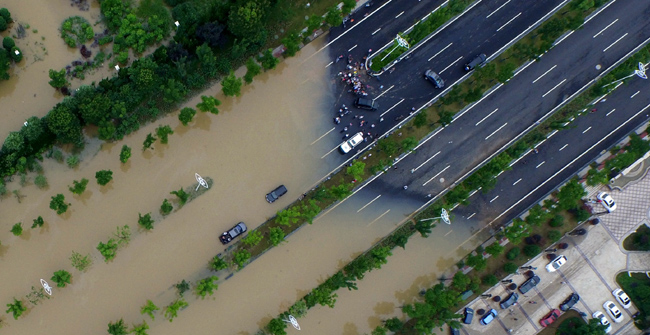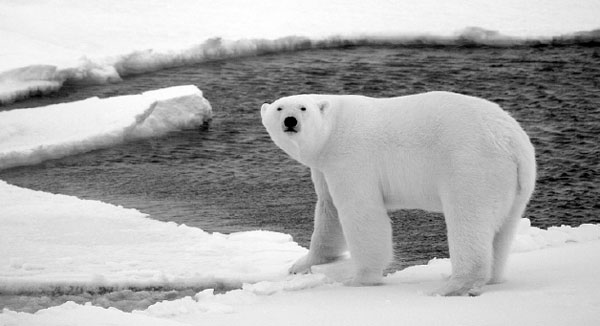Food-deprived bears threatened by waning sea ice
Updated: 2015-07-18 08:05
By Reuters in Washington(China Daily)
|
|||||||||||
Polar bears are the kings of the ice surface covering the top of the globe, but the ongoing loss of the Arctic sea ice on which they hunt seals is causing summer food deprivation that threatens these imposing predators.
Some experts had thought the bears might be able to mitigate the effects of reduced food intake by entering a "walking hibernation" during summers, an energy-conserving state of reduced activity and metabolic rate akin to the winter hibernation other bear species undertake.
A study released on Thursday showed this is not happening. Researchers who monitored the body temperature, activity levels and movements of 30 bears found they limited their summer energy expenditure, but not enough to compensate for the food deprivation they face.
The findings indicate polar bears cannot use reduced metabolic rates to extend their reliance on stored body fat when food is scarce.
"They are unable to reduce their metabolism to levels similar to hibernation," University of Wyoming zoology and physiology professor Merav Ben-David said.
University of Wyoming biologist John Whiteman added: "We found that bears appear to exhibit a typical mammalian response to food limitation in the summer, including slow, moderate declines in body temperature and activity."
The loss of sea ice in the Arctic, attributed to rising temperatures amid global climate change, has prompted worry about polar bears.
They are specialized sea ice predators, hunting ringed and bearded seals from the surface of sea ice, mostly from April to June. During that time, they accumulate fat reserves that help them survive the summer when the sea ice melts.
With rising temperatures, sea ice is melting earlier in the spring. In some areas, this has reduced bears' hunting opportunities and left them with diminished fat stores.
The researchers collected data on bears on shore and on the ice in the Arctic Ocean's Beaufort Sea, north of Alaska and Canada. They surgically implanted tiny devices to record body temperature hourly and placed collars on the bears with satellite tracking technology to monitor activity levels.
"To this day, polar bears are tied to the ice. All bears spend the majority of their lives on the ice, and in some regions, bears are born and die on the ice, perhaps never setting foot on land," Whiteman said.
|
A young polar bear on pack ice over deep waters in the Arctic Ocean is shown in this October 2009 photo provided by the University of Wyoming. Reuters |
(China Daily 07/18/2015 page2)
Today's Top News
China, World Bank pledge $50m for poor
China's stock wobbles may deter foreign investors - for now
Europe moves to restore funding to Greece after bailout vote
Low fertility rate hampers NE China's development
Industries should be on digital Silk Road
'Occupy Central' leaders to stand trial
MH17 final report to be published in October
ECB raises Greek bank funding as Europe backs new loan
Hot Topics
Lunar probe , China growth forecasts, Emission rules get tougher, China seen through 'colored lens', International board,
Editor's Picks

|

|

|

|

|

|







